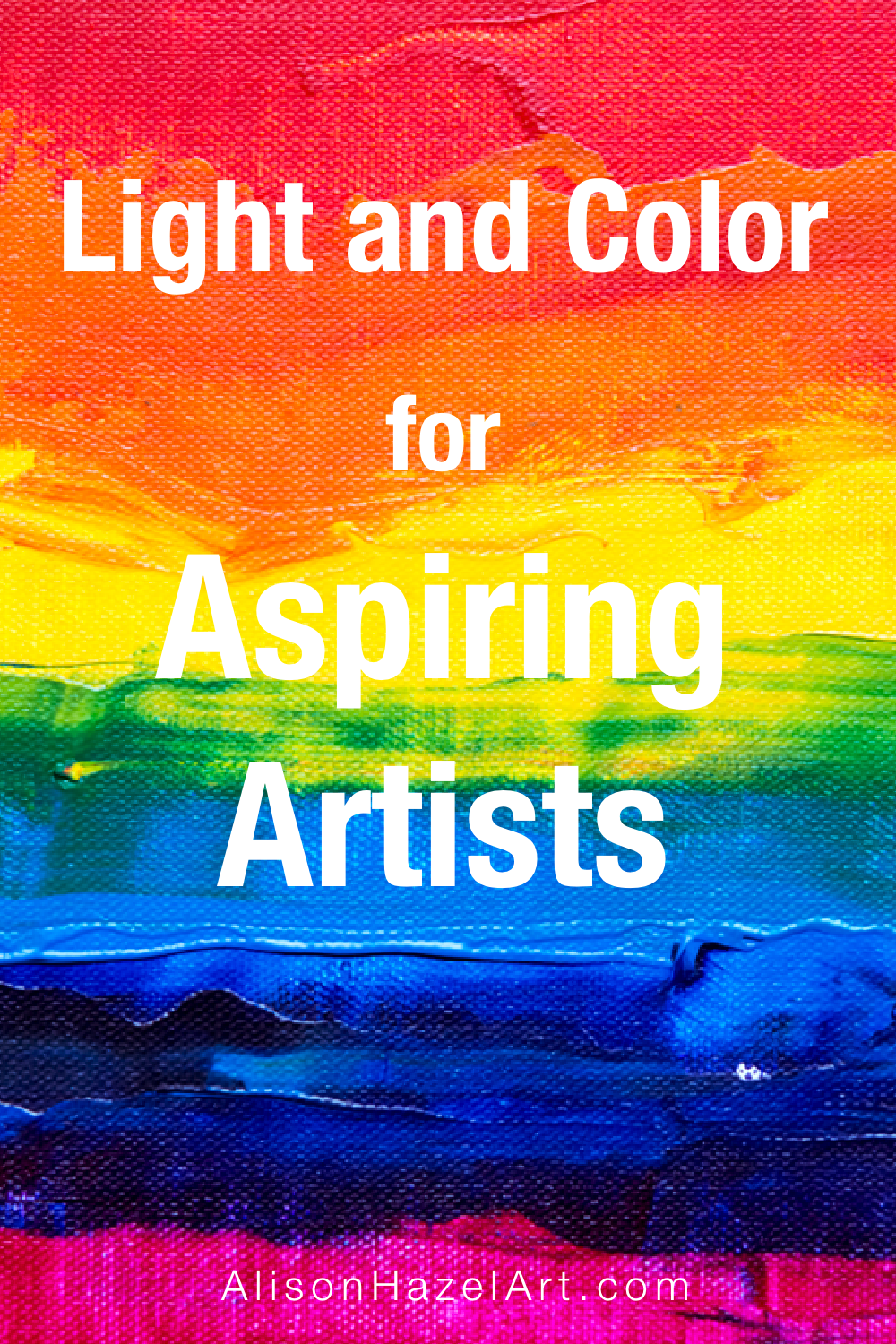Introduction
As an aspiring artist, I’ve always been fascinated with color, how we see it, where it comes from and how it can change your mood.
Many of the great artists chose their color palettes and stuck to them through the different emotional stages of life.
In this series I want to share some basics of light and color as they relate to art and rtists.
If you are an aspiring artist, you could disocver that your color choices stem from how your day went.
Join me as I develop a few posts around the influence of color on our lives.
Visible Light
Visible light is electromagnetic radiation that we can see.
Light has wavelengths thay vary between infra-red at one end and ultra-violet and the other.
Infra-red has longer wavelengths than ultra-violet.
The human eye can only see light between the wavelengths of red and violet and not infra-red or ultra-violet.

Light Sources
Light is emitted from three main sources:
- The Sun and stars.
- Fires.
- Bioluminescence in some animals like fireflies.
The Sun provides light and energy.
Green plants use to convert to sugars which in turn provide energy for the animals that eat the plants (herbivores and omnivores).
This plant energy goes up the food chain to animals that eat other animals which have eaten green plants (carnivores), and us (humans).
Light is energy.
Light gives life to planet Earth and energy to all the plants and animals.
Optics and Properties of Light
Optics is the study of light.
Light has several properties:
- Intensity.
- Wavelength (visible light is a small part of the wavelength).
- Speed – the speed of light is around 300 000 000 m/s
Visible light is emitted and absorbed in tiny packets called photons.
Photons are measured in waves and particles.

Your Eyes and Light
Your eyes are where light enters your body and consciousness.
Through your eyes the spectral sensitivity of your cone cells in your retina at the back of your eye can perceive changes in the photons between the infra-red and ultra-violet spectrum.
You have light receptors in your eyes and when the wavelength is within the spectrum you see light as colour.
Your ablity to percieve light and color is an amazing thing that your body does.
Other light (or electromagnetic radiation) like gamma ray, x-rays and microwaves you cannot see.

Optical Phenomena
Some interesting optical phenomena that break down lights are:
- Rainbows.
- Aurora borealis.
The spectrum is the colours we can see, and they are usually known as red, orange, yellow, green, blue, indigo and violet.
These seven colours are not always evenly distributed in a rainbow.
The names of the colours are where they are their most intense.
We see an object and call it a colour by the way it throws light back and what we see in our eyes.
Objects will either:
- Reflect light.
- Refract light.
- Absorb light.
- Or a combination of all three.
How you Perceive Colour
You see colour through the rods and cones in the retina of your eyes.
In daylight you can see all the colours but during twilight, as it gets darker at night and in predawn, you can only perceive colours at the blue, indigo and violet end of the spectrum.
That is why it is hard to see red in the dark.
What you See
Most people can only see the rainbow from red to violet.
This is the normal spectral range.
Some highly evolved beings are reported to see colours at the extremes of the electromagnetic colour range and they can see infra red and ultra violet.
Animals and particularly snakes, can sense infra red and some insects and spiders can sense ultra violet.
In both cases the animals don’t ‘see’ with their eyes but have developed other sensory glands.
This suggests that perception, or what you see can be brought to your brain through other channels than your eyes.
Sensory Channels to See Colour
Colour is not only seen with your eyes, but it can be perceived through other sensory channels.
Some people can feel colours and many colour therapists report this ability.
Others hear colours through listening to music and can ‘picture’ the tune in their head.
Physiology of Colour Therapy
Physiology looks at how color therapy relates to your ordinary functions.
A physiological state exists in your normal holistic state.
Monochrome
If we lived in a black and white world where everything was a shade of grey there would be no use for color.
A monochrome state marks the boundaries of a yes/no and on/off function of black and white on the human experience.
Add Color to the Mix
On a basic level color changes how we live, think, feel and act.
It brings things to life and we cannot imagine life without colour.
Each colour can make subtle changes to our mood, outlook and physical being.
Colors can be used to transform us from one state of existence into another.

Concertina Sketchbook
As a hobby artist, using a CONCERTINA SKETCHBOOK is a way to s-t-r-e-t-c-h your creative abilities and build your arty skills.

Concertina Sketchbook
As a hobby artist, using a CONCERTINA SKETCHBOOK is a way to s-t-r-e-t-c-h your creative abilities and build your arty skills.

Concertina Sketchbook
As a hobby artist, using a CONCERTINA SKETCHBOOK is a way to s-t-r-e-t-c-h your creative abilities and build your arty skills.



